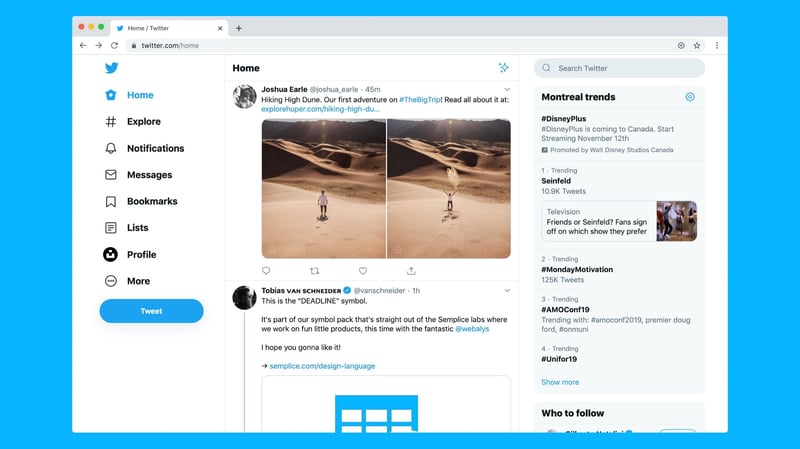3 Ways To (and Why You Should) Refresh Your Onboarding Practices
TABLE OF CONTENTS
Up to date onboarding = good onboarding. Good onboarding = improved retention.
Businesses are living, breathing entities. They aren’t (or shouldn’t be) static, but ever-evolving alongside the changing demographics of the workforce, emerging technologies and new trends.
And your onboarding process should be part and parcel of this strategy of continuous reviewing and betterment.
Why?
Onboarding is a small window of opportunity in which to set your new hire up for success. Fail to and you run the risk of losing them - in 2018, 3 in 4 employees who quit could have been retained.
The cost of hiring is around $4,000, and the cost of replacing a lost hire can be anywhere between $3,000 - $18,000. It’s in your best interests to curtail this by making sure your employee is equipped with everything they need to perform to the very best of their ability from the get go.
You’ll need to provide the right training, communication and engagement, delivered at the right time, and in a motivating way - make sure individuals have this, and you secure Workforce Success - the continued success of the collective, over time.
So instead of seeing your onboarding tools, strategies or resources as needing to be gutted and rewritten every 2-3 years, save yourself time in the long run by incorporating short, frequent reviews into your to-do list.
Block out 30 minutes in your calendar every two weeks dedicated exclusively to updating your resources. This may be too frequent (or too infrequent) for your company - you’ll have a sense of what works best for your unique situation.
The closer you are to your onboarding resources and the information contained within, the better equipped you are to make changes. Let them gather dust, and you’ll feel avoidant about reopening them - and understandably. It’ll feel as though you’re uncovering an ancient, indecipherable relic for the first time.
Having to refamiliarise yourself with a document you’ve forgotten the contents of, then rack your brains trying to remember every significant change over the last year, is far more laborious than simply turning ‘review & refresh’ into a habit.
Ok, sounds good. How do I do it?
Evaluate your onboarding process by putting yourself in the shoes of your new hires.
Think back to your first week in your current role - what did you like about the onboarding process? What could be improved?
How did you feel about being a new starter there, prior to your first day? Did your new employer take any steps to preboard you? To make you feel like part of the company and culture ahead of that daunting first day?

Was there even an onboarding process? And what do you wish you had known when you started?
Taking into consideration a potential employee’s personal experience by asking yourself these kinds of questions is a great springboard for effective onboarding.
Companies that invest in employees’ experience are 4x more profitable than those who don’t.
3 Ideas to Innovate your Onboarding
For many modern workforces, new hires may not come into the office at all.
The gig economy is growing to make up an ever-increasing chunk of the total global workforce - doubling in size in the U.K., in only three years. This means that onboarding information needs to be delivered in a bite-sized, easily accessible, ‘on-demand’ manner (i.e. at your new hire’s point of need).
Aside from covering the 'essentials’ of how to get started, it must also motivate and engage to promote knowledge retention.
1. Create a sense of belonging
It's important to create excitement and a sense of belonging, make sure this doesn't get lost in the more technical or compliance-related onboarding materials.
A great way to achieve this is through short videos of your employees talking about their experiences. Hearing from other employees creates empathy and relatability, leading to improved knowledge retention and feelings of community. This in turn yields greater motivation, productivity and loyalty.

Some questions existing employees can address:
-
What do they like about working at your company?
-
What does a typical day look like?
-
What differentiates it from other places they’ve worked at?
It’s very encouraging for new hires to hear from colleagues and peers. Check out how Uber share their driver partners’ personal stories. Add liveliness by showing clips of footage taken from team events or offsites, or that time you surprised a colleague with a birthday card and cake.
2. Tell your story and make your values known
“What kind of environment am I joining?” is probably a question on the forefront of your new hire’s mind. Stay one step ahead by communicating this to them effectively and memorably.
Here are some key questions to address:
-
What are your vision and mission?
-
How are you different from your competitors?
-
Who are your founders, who's in your C-Suite, and what are their stories?
-
What are your growth plans and how will you achieve them?

It's important to add a personal touch. If your workforce is dispersed, meaning no one will be meeting new hires face-to-face, replicate an in-person connection by including short welcome videos from the CEO and/or Head of HR, for example.
You can also add video testimonials from your clients. These could include how they are using your product or service, and why they love doing so. Here’s a great example from InVision on how their client, Netflix, use their product.
3. Stay brief and deliver information in engaging way
Starting a new job is overwhelming, to say the least. Don’t inundate your new hire - they won’t remember it. Stay short and focused on what people really need to know at the beginning of their journey.
Follow up with regular training so that learning becomes a continuous habit that fits into busy schedules.

Videos are the most impactful form your content can take on. This is because they're incredibly effective in delivering information in a way that is engaging and memorable. They also provide authentic context and scenarios to boost learning and retention.
Reflect on your own online behaviour for a moment. How much time do you spend watching videos? And how much more likely are you to watch a short video, than read about the same? You’re not alone: in 2017, video content represented 74% of all internet traffic.
Previous experience and a large production budget aren’t necessary. Start with something quick and easy, get feedback from your colleagues and rehash. Our clients have filmed excellent, effective live action videos using just their phones and a simple tripod. (Check out the ‘Filming tips’ section in our blog series on how to make microlearning videos).

Live action allows you to add a personal, authentic flavour by showing role plays between a sales rep and a client, for example. But it's just one of many options available to you. Your onboarding training can include different types of videos depending on what you’re looking to convey.
For example, screen capture using free tools like Screencast-O-Matic is ideal for showing people how to get started with software. You can also export slideshows as a video and add an audio narration.
These videos are quick and easy to make (you can do it all in PowerPoint or Keynote), and can be used to train people on the company, health and safety, compliance, and plenty more.

As you may be able to tell, we’re big advocates of the learning power video holds. So, we’ve created a handy guide to video production.
The takeaway...
Onboarding is key to new hire retention. Your resources surrounding it should be considered a constant work in progress rather than ever 100% complete. Culture, goals, branding - it’s all liable to change.
And you can’t risk a poor onboarding experience. The repercussions - low productivity and high churn - for your company are far from ideal.
If you'd like to see how you can use eduMe's mobile-first platform to deliver the perfect onboarding training to your employees, freelancers or clients, book in a personal demo.
Join 10,000+ frontline leaders
Subscribe to ‘Training the Frontline’ and get weekly insights sent straight to your inbox.


